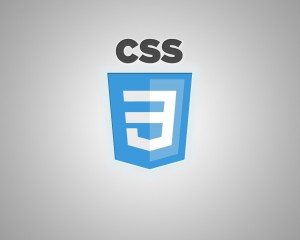 CSS Scoping is one of the technical terms used in the field of web designing and development. In the last few years, the web designing and development field has progressed with the help of the HTML5 and CSS3 techniques. With each passing day, the web designing field introduces new codes and snippets that come along with new improvements and greater enhancements.
CSS Scoping is one of the technical terms used in the field of web designing and development. In the last few years, the web designing and development field has progressed with the help of the HTML5 and CSS3 techniques. With each passing day, the web designing field introduces new codes and snippets that come along with new improvements and greater enhancements.
Recently introduced is the “CSS Scoping.” Here is a helpful guide to CSS Scoping.
CSS: The Cascading Style Sheet, popularly termed as “CSS,” is a style sheet language used to describe the look as well as formatting of the document that is written in a markup language.
Scope: In the computer programming language, the scope is termed as a computer program in which generally an identifier is in effect, but it can be resolved to an entity when it is visible.
Scoped CSS: The recently introduced and lesser known feature of the HTML5 is the Scoped CSS. It is considered an attribute for the style blocks.
Where to implement Scoped CSS feature?
When the scoped attribute is present, it is important that the user agent apply the specified style information to the style element’s parent element as well as that element’s child nodes. Where do you use or implement the scoped CSS snippets? There are a number of instances where Scoped CSS can prove to be the most favorable option to use while designing a website for your business.
- While working with your web development team or designing a website yourself, you can make use of the global CSS files or the Scoped CSS wherever they need to be implemented. This offers greater convenience to the team as they will not have to ask every time when using a particular web page format.
- You can customize your own styles on your website if you think that there is a competitor website that is similar to your theme. You can create your own global stylesheet with the help of Scoped CSS.
- If you are planning to use widgets through third-party sites, you can make use of in-widget styles that wouldn’t affect the site at any other location. You can also make changes or reset the styles within the widgets as per their convenience.
- You can offer your readers or users the option to stylize different types of tags on the site in the comments section.
- The most important thing that one can take advantage from Scoped CSS is the Content Management Systems (CMS). In CMS, one can come across various options for adding unique markups to the common template areas.
There are many other helpful features of the Scoped CSS that make web designing convenient for the designers and developers.
Things to keep in mind while implementing Scoped CSS
There are certain important points to keep in mind while using and implementing the Scoped CSS feature. Below are listed such important points:
- The Scoped CSS offers greater convenience, but a major issue is that it ends up placing styles everywhere on the web page. You have to use different ID selectors and linked stylesheets within your website.
- Another major thing to keep in mind is to avoid the inline styles that can be quite messy. Inline styles complicate the troubleshooting, add to page weight, and are difficult to overwrite as well as hard to maintain.
- Without the use of proper polyfill, the Scoped CSS may be risky. Browsers that do not support Scoped CSS may declare the CSS effect to the entire web page. It can be disastrous for the website.
Keeping these major factors in mind, the implementation of Scoped CSS can be done easily and effectively.
The Scoped CSS, along with offering you the greater convenience to give an enhanced look to your web page, also involves some risks which should be kept in mind. If one fails to maintain certain criteria while implementing Scoped CSS, it can lead the website to have unexpected results. There are web designing & developing companies you can hire that offer the best Scoped CSS implementation. Scoped CSS may prove to be a very powerful web component for your website.
Find a Home-Based Business to Start-Up >>> Hundreds of Business Listings.
















































